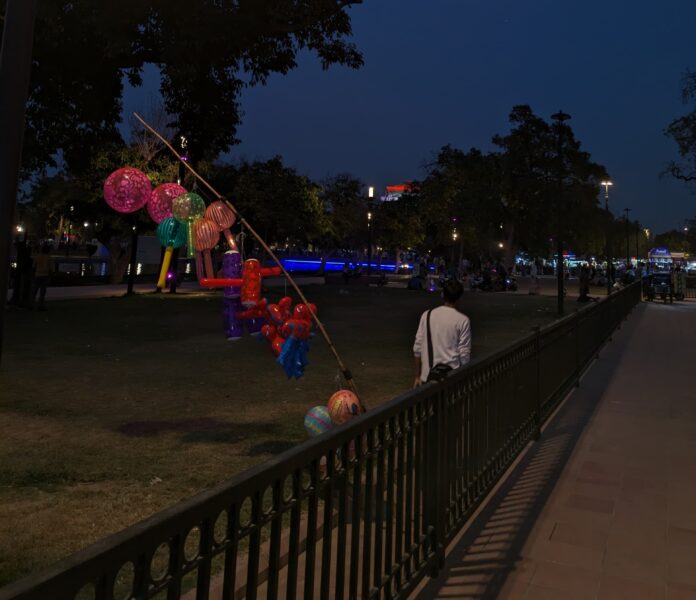Harishankar Manoj, TwoCircles.net
New Delhi: Every morning for the past 25 years, Sapna Devi (name changed) has boarded a bus from Dwarka with bags full of glowing trinkets, plastic toys and cheerful inflatables. She walks the same steps her father-in-law once did, to set up her little stall at the India Gate complex, which is her family’s legacy and her only livelihood.
But three years after the Central Vista Redevelopment Project swept through Delhi’s most iconic public space, she finds herself not only without a stable place to sell, but without dignity, certainty, and often, without dinner.
“There is no means for us to live anymore. Our entire livelihood is under threat. My husband and eldest son also used to work with me here, and when the business was good we would even employ two or three others to look after it. But now, when our next meal is uncertain, how can we afford to feed someone else?” she says.
The 52-year-old continues to come alone now. Her husband and sons have left in search of other jobs, but she stays behind, held back by desperation and a history she cannot leave behind.
“We are illiterate, we do not have any resources, where else do we go to work at this age?” she asks, with a disconsolate expression.
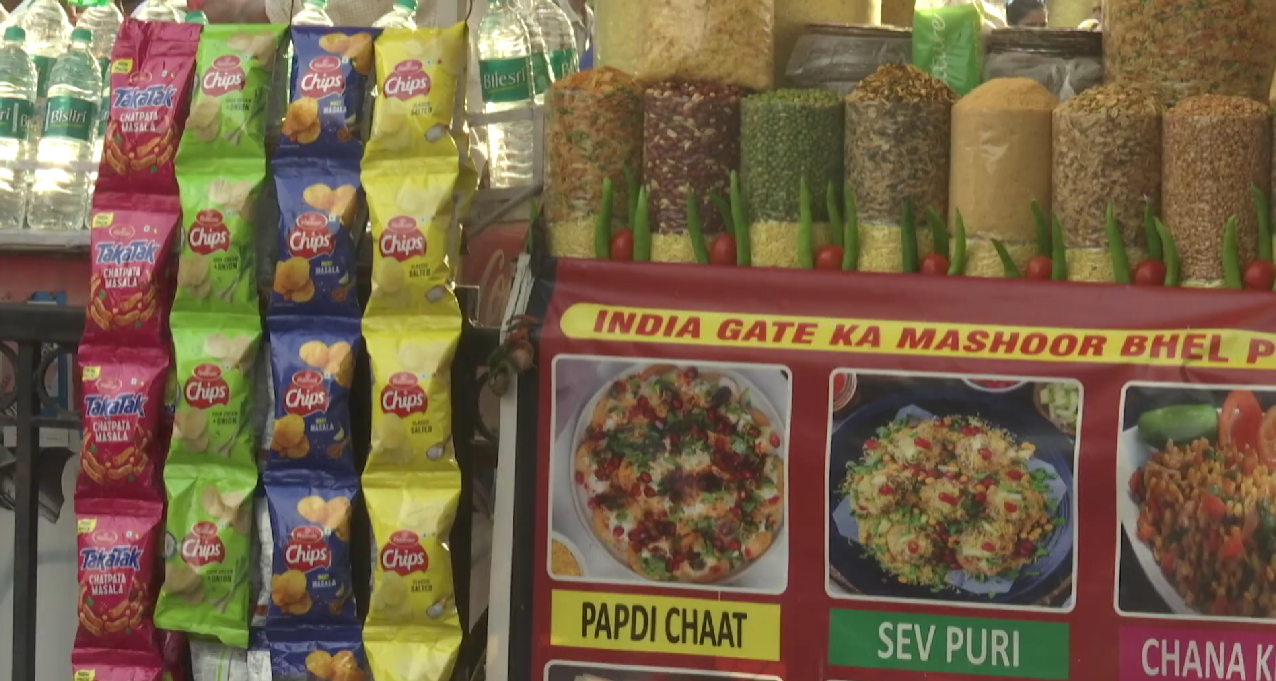
A Public Space Without Its People
With its 1.8-kilometre stretch along Kartavya Path to the National War Memorial, India Gate is the heart of the national capital. It has always been full of life, with children’s laughter, chuskis melting in the summer heat and families picnicking under the open sky. It is a place of memories, daily routines and work for street vendors like Sapna.
But in the name of beautification, the Central Vista Project has brushed away these human stories like dust from a floor plan. Vendors say what was once community and chaos has now become sterile control.
“Harassment”. “Extortion”. “Displacement”. These words have allegedly become a routine.
Street vendors allege they are being pushed out by guards, police and policies that treat them as intrusions on a canvas where they once belonged.
“I was never in the habit of roaming around selling toys, I sat at one spot. Now I get asked to relocate every time a guard spots me. I have to collect all my stock and move beyond the canal, where the people barely go,” she says.
Caught in Legal Limbo
“I have scuffed my soles and greyed my hair running behind these licenses for the last 35 years,” he says, with visible bitterness on his face.
Though street vending laws exist, applications often lead nowhere. The New Delhi Municipal Council (NDMC) does not issue vending licenses, only health clearances for food vendors. Without proper licensing, even those within “designated” vending zones are vulnerable to eviction.
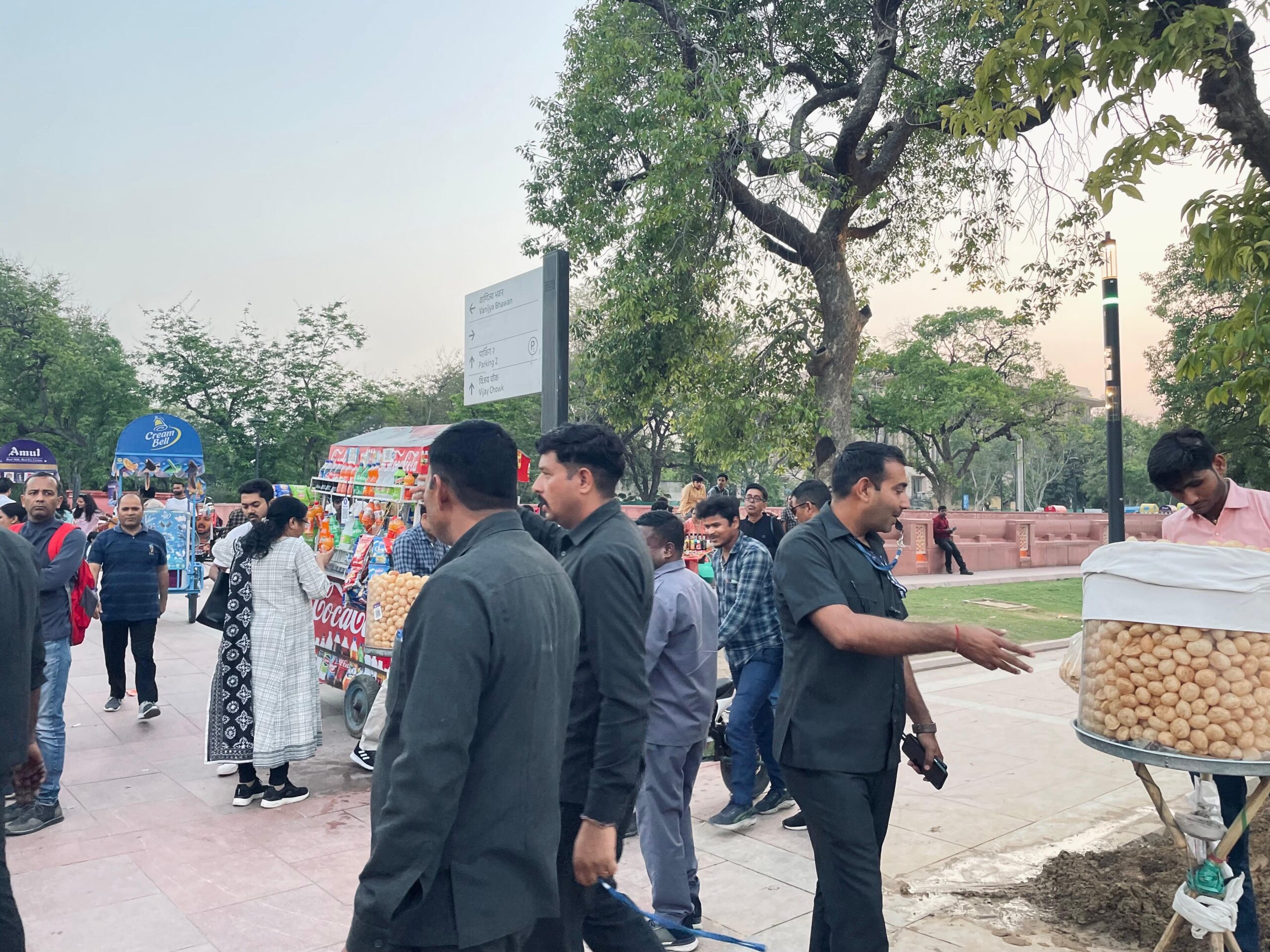
“Our situation has worsened compared to before. Now we have to do our business according to the whims of the police,” says Tejwan, a vendor since 2001.
Booked repeatedly under Bharatiya Nyaya Sanhita section 285 for obstruction in a public way, he faces fines of up to Rs 5,000.
“We cannot afford a lawyer, nor do we have the leisure to follow up court cases. I cannot help but stay past 9 pm, because I have a family to feed,” he shrugs.
Meanwhile, NDMC distances itself. “The Central Public Works Department (CPWD) may ask us for assistance and we intervene then, but we do not hold direct control over the Central Vista anymore,” explains NDMC Joint Director of Enforcement Manish Kumar.
Though the area adjacent to India Gate was declared a non-vending zone even before redevelopment, vendors have operated there for decades. Now, in the wake of surveillance and seizures, many preserve their old challans (receipts) as makeshift legitimacy.
An NDMC official rationalises the frequent raids. “Security concerns at India Gate are at an all-time high. The NDMC is also under pressure to respond to grievances and resolve complaints from the public. Where there is crime, there is policing; where there is encroachment, there is enforcement,” he asserts.
Sanitation is another cited concern. Sapna points out, “In the months immediately following the inauguration (Kartavya Path), there were regular replacing of dustbins and cleaning by staff. Not only have they cut down on cleaning staff now, the spots for the dustbins lay empty.”
Street vendors now carry their own trash cans, just to avoid more fines. “They cut back on sanitation, and the blame falls on us,” she adds.
A Battle for Dignity
For women and disabled vendors, alleged indignity is daily.
Monica Das, a 40-year-old momo vendor, recounts, “We have to move heavy stove equipment and hot food immediately at their orders, which gets very hard for me with a child in my hand.”
Guards have even filmed her, she claims.
Satish Kumar (38), who sells fruits, has a physical disability. It has not spared him from alleged threats or fines.
“Our job of 40 years has been wrecked,” says Arshad Khan, who runs the beloved ‘Shikara Lovely Chuski’ stall.
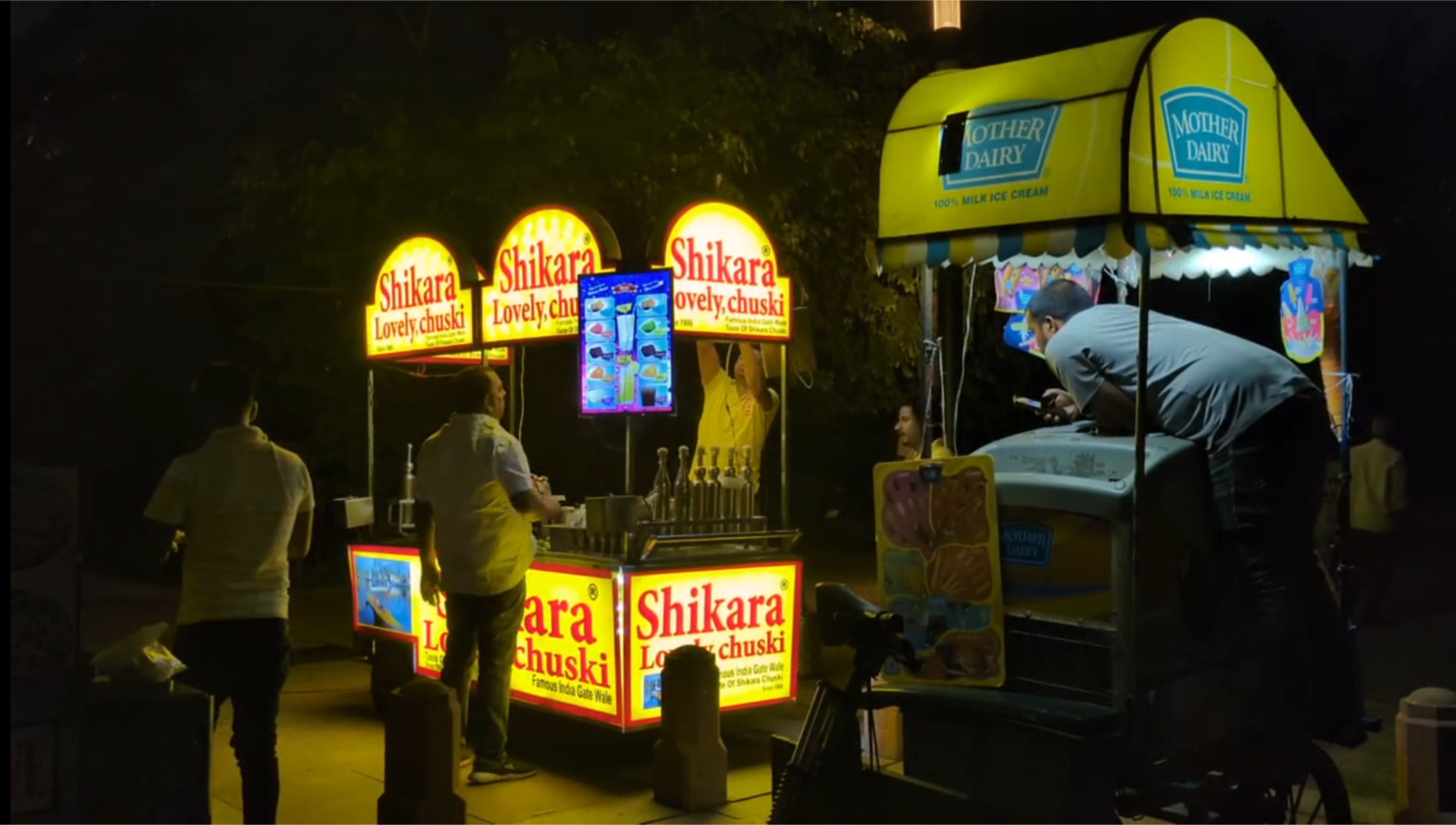
Despite being part of the vending zones introduced in the 2022 reopening of Kartavya Path, vendors say the designated spaces are cramped, detached from footfall and flawed in planning.
“Not only are the zones made at the wrong spot, detached from the public, but they are also cramped. Our sales have marginally fallen,” he complains.
Although the zones were meant to regularise vending, the ice cream vendors were the first (and sometimes only) to receive permissions, vendors claim, for their aesthetic carts unlike the humble momos or gol gappas (water balls, a popular street).
A Survey, A Flicker of Hope
There may be light in the distance. In compliance with the Street Vendors Act of 2014, a Town Vending Committee (TVC) was constituted under the NDMC and the Municipal Corporation of Delhi (MCD) in 2018. Following a Delhi High Court order, it began surveying street vendors from January 2, 2025 to collect data for demarcation of legal vending zones and issuing Certificates of Vending, which will be recognised as a license for street vending for those who qualify.
The committee includes 30 members, including the local body chairperson, deputy commissioner of police, a chief medical officer, officials from the revenue department, urban architects, representatives of the concerned resident welfare organisation, NGO officials and 12 elected vendors.
The TVC is a temporary body, engaging itself with preparing a report on street vending, after which a permanent authority will oversee it.
According to the vendors, the survey require their Aadhar and PAN cards, in addition to details of family such as the certificates of children and proof of address, which will be referenced and cross-checked with electoral roll data. It also records the nature of trade of the vendors and designated places of profession.
But the process is multilayered and will take time to complete.
“There are multiple rounds of surveying, and it will take time to be over. I estimate around a year until the certificates are issued properly,” says Mohammed Hayat, an elected member of the TVC who has been selling readymade garments at Janpath for over 30 years.
Still, he insists that the vendors come first. “Even vendors found ineligible are being considered in subsequent meetings,” he says.
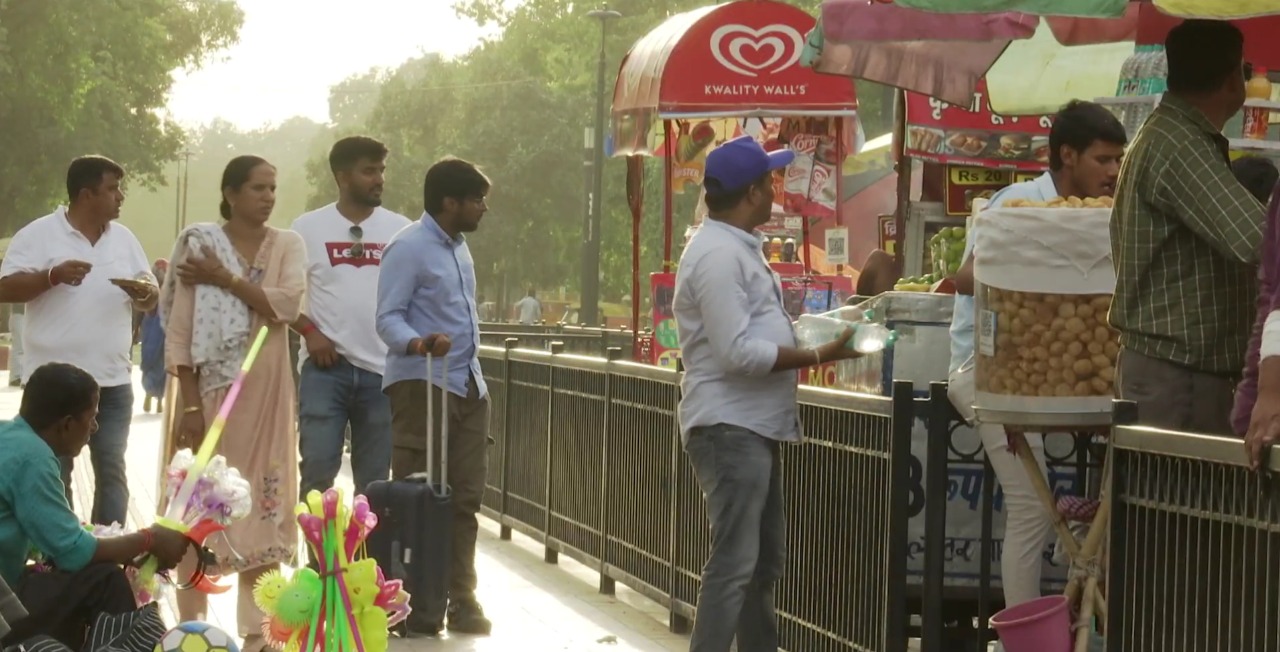
Bribes and Mafias
But paperwork and promises cannot erase the undercurrents of corruption. “The vendors have been there for generations, but our society does not accept their belonging to there,” says Arbind Singh, national coordinator of the National Association of Street Vendors of India (NASVI).
He does not mince words, “The vendors are not organised. Their belief in protests and collective action is weak. They bribe, or are rather forced into doing it, civic body officials, police and mafias for short term solutions. The situation is such that if we send even one inspector there, he will also start taking bribes.”
There are alleged “vending mafias” in the area that operate with “immunity”. There are two or three major groups that vendors say operate openly, allegedly shielded by their police contacts.
“They blatantly extort money from the vendors. We have tried organising the vendors against them multiple times and even filed complaints. But every time, the complaints were eventually withdrawn following intimidation,” says Arbind.
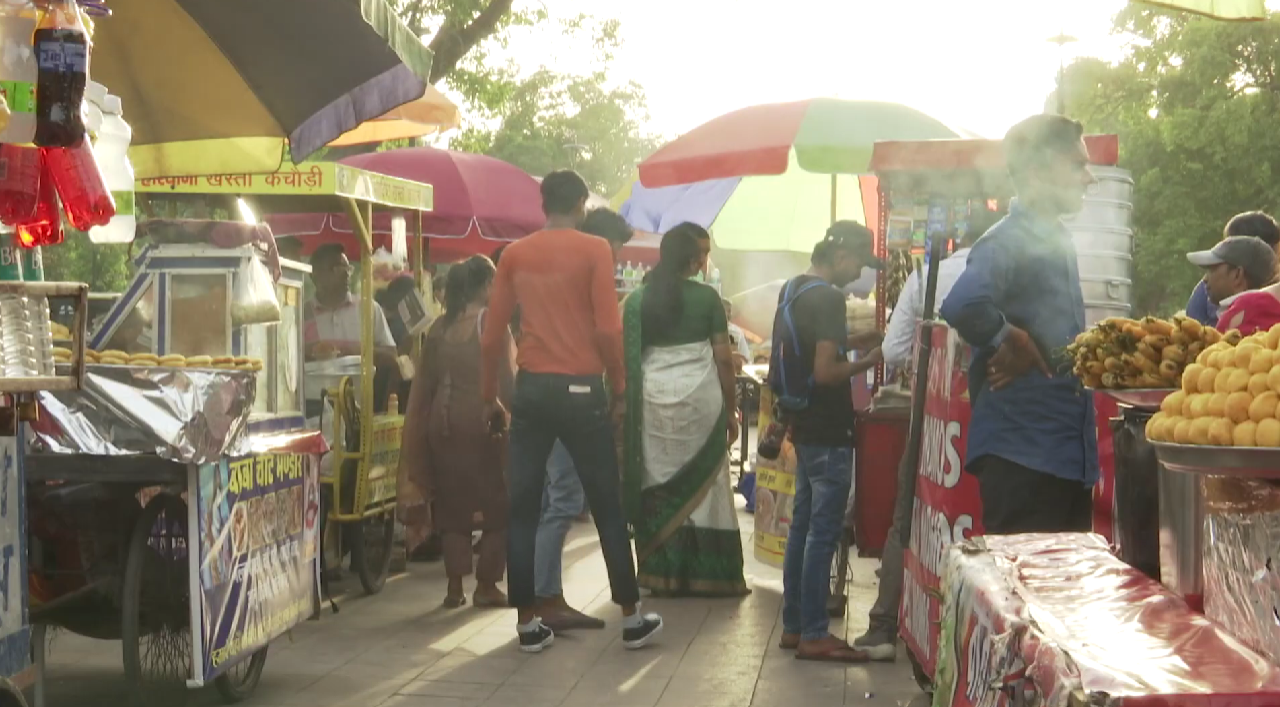
Divya Kumari knows this all too well. She is often left with no profits after a full day’s work. “Just today, Rs 700 were taken from me. The business is higher on the weekends, the committee (civics body) folks and others drop by to extort money from us then. They show up and ask for money without any reason. If I try to give the money over the table, they reproach me saying lower your hands and give it covertly,” she alleges.
She lists her expenses: the NDMC challans of Rs 1,500 to Rs 3,000 and garbage fines of Rs 50 to Rs 500.
“Whatever they touch they take away with them, and we have to run behind their trucks to get our things back. It is not even that we will get our stalls back properly once we pay the fine. They damage the goods too,” says the 28-year-old.
Rishi, 22, who sells cold drinks, asks, “I work hard day and night, I do my business with integrity and honesty and then how is it fair for the people in power to eat with my money while I starve?”
Defeated Divya adds, “What is one complaint of mine going to do? Once I tried complaining, and I was told that their pen has more power than my voice.”
A Dying Public Space
Since July 2025, a new rule forbids picnics at India Gate. No food. No blankets. Not even idle sitting.
“We used to have customers till 2 am at one point… Now they do not even let the public sit down, let alone us street vendors,” says Tejwan.
Closing time has crept earlier from midnight to 11 pm, then 10 and now 9 pm. Vendors say they are removed by 7 in the evening.
Sapna struggles to earn even a few hours’ wage. “Earlier we used to be allowed till 12 O’Clock… now it is at 9 pm,” says Divya.
Some hang back outside the compound, hoping for straggler customers. “There used to be a time when if there was a power cut somewhere in Delhi, people did not stay at home but quickly drove for a night out at India Gate… That kind of leisure feels impossible now,” says Manoj Kumar, a North Delhi resident who has been coming here since childhood.
The All-India Institute of Local Self Government estimates that between 4 to 5 lakh street vendors and hawkers operate in Delhi.
What is happening at Central Vista is not merely an aesthetic facelift, but also a case of systemic social exclusion. In the backdrop of demolitions of neighbourhoods and houses across the city, say stakeholders, this becomes a demolition of livelihoods of people who have, for generations, claimed their belonging to a place.
Behind the steel barricades and manicured lawns lies the silencing of a city’s soul.

